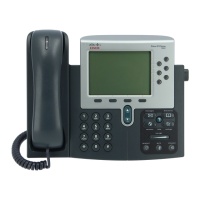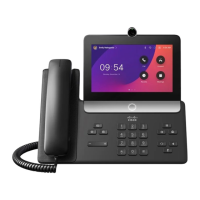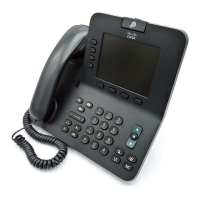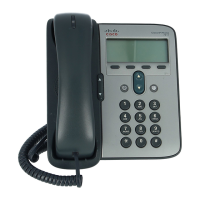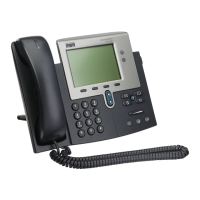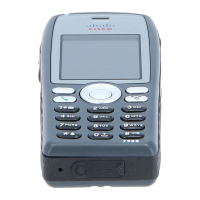B-46
Cisco SIP IP Phone Administrator Guide
AppendixB SIP Call Flows
Call Flow Scenarios for Failed Calls
Call Flow Scenarios for Failed Calls
This section describes call flows for the following scenarios, which illustrate unsuccessful calls:
• Gateway-to-Cisco SIP IP Phone—Called User Is Busy, page B-46
• Gateway-to-Cisco SIP IP Phone—Called User Does Not Answer, page B-48
• Gateway-to-Cisco SIP IP Phone—Client, Server, or Global Error, page B-50
• Cisco SIP IP Phone-to-Cisco SIP IP Phone—Called User Is Busy, page B-51
• Cisco SIP IP Phone-to-Cisco SIP IP Phone—Called User Does Not Answer, page B-52
• Cisco SIP IP Phone-to-Cisco SIP IP Phone—Authentication Error, page B-53
Gateway-to-Cisco SIP IP Phone—Called User Is Busy
Figure B-14 illustrates an unsuccessful call in which User A initiates a call to User B, but User B is on
the phone and is unable or unwilling to take another call.
12. INVITE—Cisco SIP IP phone B
to Cisco SIP IP phone A
Cisco SIP IP phone B sends a mid-call INVITE to Cisco SIP IP phone A with the
same call ID as the previous INVITE and new SDP session parameters
(IP address), which are used to reestablish the call.
Call_ID=1
SDP: c=IN IP4 181.23.250.2
To reestablish the call between phone A and phone B, the IP address of phone B
is inserted into the c= SDP field.
13. 200 OK—Cisco SIP IP phone A
to Cisco SIP IP phone B
Cisco SIP IP phone A sends a SIP 200 OK response to Cisco SIP IP phone B.
14. ACK—Cisco SIP IP phone B to
Cisco SIP IP phone A
Cisco SIP IP phone B sends a SIP ACK to Cisco SIP IP phone A. The ACK
confirms that Cisco SIP IP phone B has received the 200 OK response from
Cisco SIP IP phone A.
SIP IP phone B acts as a bridge mixing the RTP channel between User A and User B with the channel between User B and
User C; establishing a conference bridge between User A and User C.
Step Action Description
